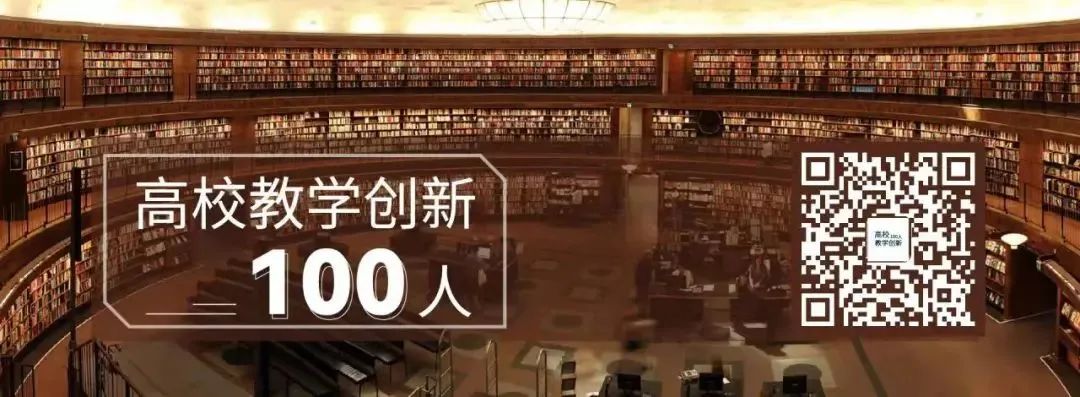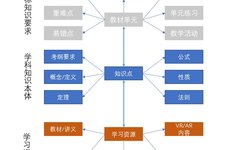The full text is about 3900 words, reading takes 9 minutes.
Introduction
What is a “knowledge graph”? What are its application scenarios?
Author丨Tinghao Shi, Fudan University Knowledge Workstation Laboratory
Source丨Knowledge Graph Space
01Construction and Application Ideas of Educational Knowledge Graph1. Construction of Knowledge Graph in Education FieldBuilding an educational knowledge graph is the foundation for intelligent applications in the education sector. The educational knowledge graph centers around subject knowledge, establishing concepts, hierarchical relationships, and connections between knowledge points, as well as the sequential relationships among different knowledge points, forming the subject knowledge graph (Figure 1). Subject knowledge is just one type of teaching resource in the education sector; other multimodal learning resources such as textbooks, teaching aids, exam questions, videos, and images also need to be covered when constructing the knowledge graph.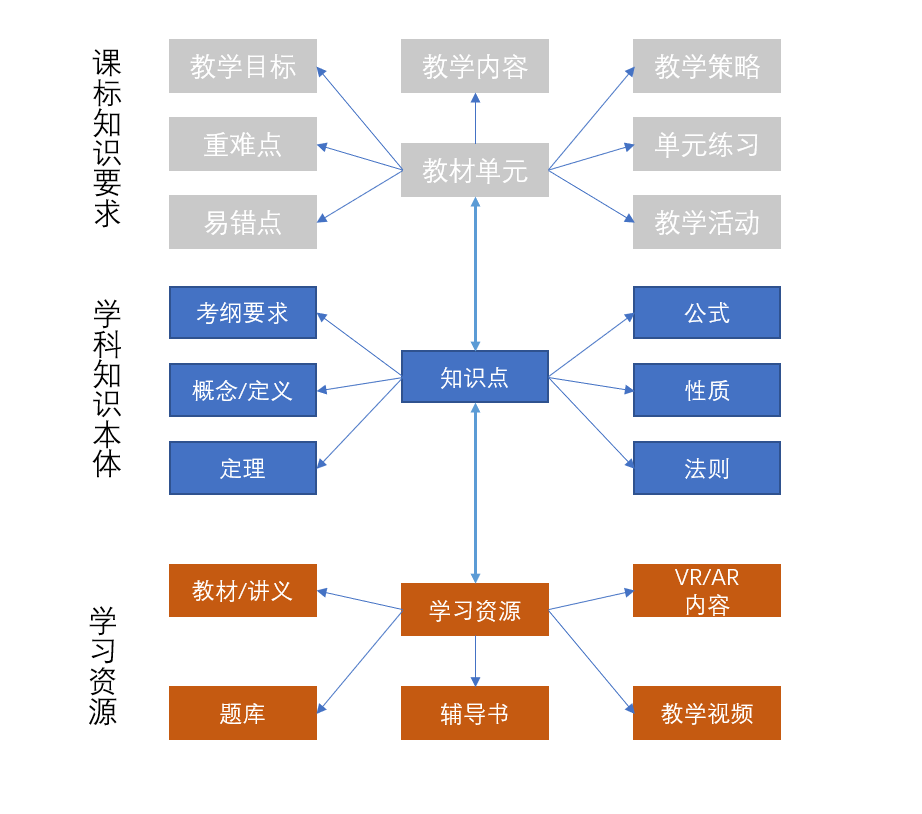 Figure 1 Example of the Subject Knowledge Graph Ontology Model in the Education FieldThe construction of the educational graph ontology layer mainly involves sorting out concepts within the education sector and defining relationships, attributes, and related constraints. Currently, this is primarily done by domain experts, with certain technological means as assistance. Domain experts refer to curriculum standards and textbooks to outline a domain knowledge system that covers core concepts and basic relationships, modeling the knowledge framework of that subject.The knowledge acquisition part is the core of constructing the educational knowledge graph and can be semi-automated using human-machine coupling. The educational knowledge graph has very high quality requirements, with the accuracy needing to be nearly 100%. In the quality control stage, knowledge with relatively low confidence must be manually reviewed by educational researchers to ensure correctness. The process of constructing knowledge resources is a long-term endeavor that requires collaboration between the operational team and the algorithm engineering team, continuously iterating and improving.2. Application Ideas of Educational Knowledge GraphThe educational knowledge graph can visually present the relationships between knowledge points clearly to students, helping them build knowledge systems, reference knowledge points, discover connections between knowledge points, summarize and consolidate, and eliminate knowledge blind spots.After the construction of the subject knowledge graph, it needs to be associated with teaching resources (textbooks, exam questions, lecture notes, teaching videos, test papers, etc.) by establishing connections between knowledge points and users through user information and learning records. The knowledge graph can more accurately depict the mastery of knowledge by students and describe resources more accurately, thereby enabling precise analysis of user learning conditions, personalized learning path planning, and personalized learning resource recommendations.The knowledge graph can also assist teachers in understanding student learning conditions better, optimizing teaching methods, and adjusting teaching strategies; by associating with educational research materials, it can proactively recommend educational research materials to teachers, enhancing the efficiency and quality of their preparation. An auxiliary teaching Q&A system centered around knowledge graph Q&A technology can effectively reduce the burden on teachers from simple repetitive questions and greatly satisfy students’ inquiry needs.Building an educational knowledge graph requires integrating data scattered across various systems in the education sector and extracting domain knowledge (course knowledge, teaching knowledge, subject knowledge, encyclopedic knowledge, etc.) through a series of technologies, depositing it into a knowledge base in a user-friendly manner, and establishing relationships between knowledge and teaching resources.Based on the educational knowledge graph, combined with natural language processing, machine learning, data mining, graph mining, and graph reasoning technologies, applications such as semantic search, precise recommendations, user profiling, intelligent Q&A, behavior prediction, precise analysis, and decision support constitute the entire educational intelligence framework, applied in various teaching scenarios to empower smart education, achieve improved teaching efficiency and quality, and promote educational equity and personalized intelligent education.
Figure 1 Example of the Subject Knowledge Graph Ontology Model in the Education FieldThe construction of the educational graph ontology layer mainly involves sorting out concepts within the education sector and defining relationships, attributes, and related constraints. Currently, this is primarily done by domain experts, with certain technological means as assistance. Domain experts refer to curriculum standards and textbooks to outline a domain knowledge system that covers core concepts and basic relationships, modeling the knowledge framework of that subject.The knowledge acquisition part is the core of constructing the educational knowledge graph and can be semi-automated using human-machine coupling. The educational knowledge graph has very high quality requirements, with the accuracy needing to be nearly 100%. In the quality control stage, knowledge with relatively low confidence must be manually reviewed by educational researchers to ensure correctness. The process of constructing knowledge resources is a long-term endeavor that requires collaboration between the operational team and the algorithm engineering team, continuously iterating and improving.2. Application Ideas of Educational Knowledge GraphThe educational knowledge graph can visually present the relationships between knowledge points clearly to students, helping them build knowledge systems, reference knowledge points, discover connections between knowledge points, summarize and consolidate, and eliminate knowledge blind spots.After the construction of the subject knowledge graph, it needs to be associated with teaching resources (textbooks, exam questions, lecture notes, teaching videos, test papers, etc.) by establishing connections between knowledge points and users through user information and learning records. The knowledge graph can more accurately depict the mastery of knowledge by students and describe resources more accurately, thereby enabling precise analysis of user learning conditions, personalized learning path planning, and personalized learning resource recommendations.The knowledge graph can also assist teachers in understanding student learning conditions better, optimizing teaching methods, and adjusting teaching strategies; by associating with educational research materials, it can proactively recommend educational research materials to teachers, enhancing the efficiency and quality of their preparation. An auxiliary teaching Q&A system centered around knowledge graph Q&A technology can effectively reduce the burden on teachers from simple repetitive questions and greatly satisfy students’ inquiry needs.Building an educational knowledge graph requires integrating data scattered across various systems in the education sector and extracting domain knowledge (course knowledge, teaching knowledge, subject knowledge, encyclopedic knowledge, etc.) through a series of technologies, depositing it into a knowledge base in a user-friendly manner, and establishing relationships between knowledge and teaching resources.Based on the educational knowledge graph, combined with natural language processing, machine learning, data mining, graph mining, and graph reasoning technologies, applications such as semantic search, precise recommendations, user profiling, intelligent Q&A, behavior prediction, precise analysis, and decision support constitute the entire educational intelligence framework, applied in various teaching scenarios to empower smart education, achieve improved teaching efficiency and quality, and promote educational equity and personalized intelligent education.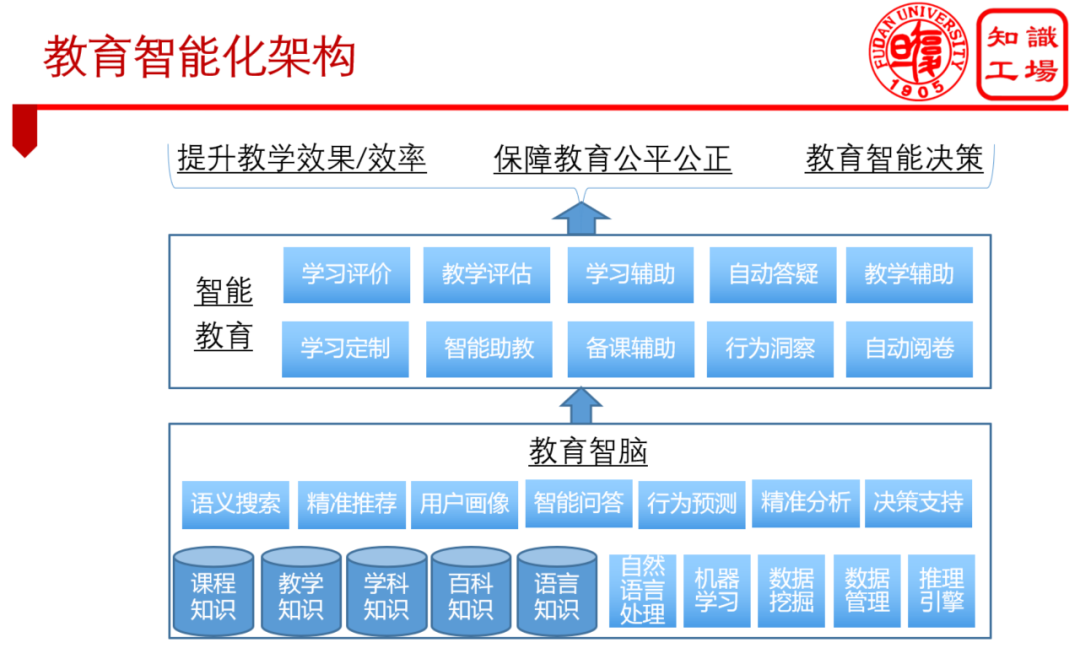
 02Six Major Application Scenarios of Knowledge Graphs1. Learning Condition DiagnosisThe educational graph connects user behavior information with resource objects, extracting key information to accurately portray user profiles. User profiles based on the knowledge graph can accumulate data, providing a comprehensive and precise portrayal of users and diagnosing their learning conditions.1. Accurate User Profiling
02Six Major Application Scenarios of Knowledge Graphs1. Learning Condition DiagnosisThe educational graph connects user behavior information with resource objects, extracting key information to accurately portray user profiles. User profiles based on the knowledge graph can accumulate data, providing a comprehensive and precise portrayal of users and diagnosing their learning conditions.1. Accurate User Profiling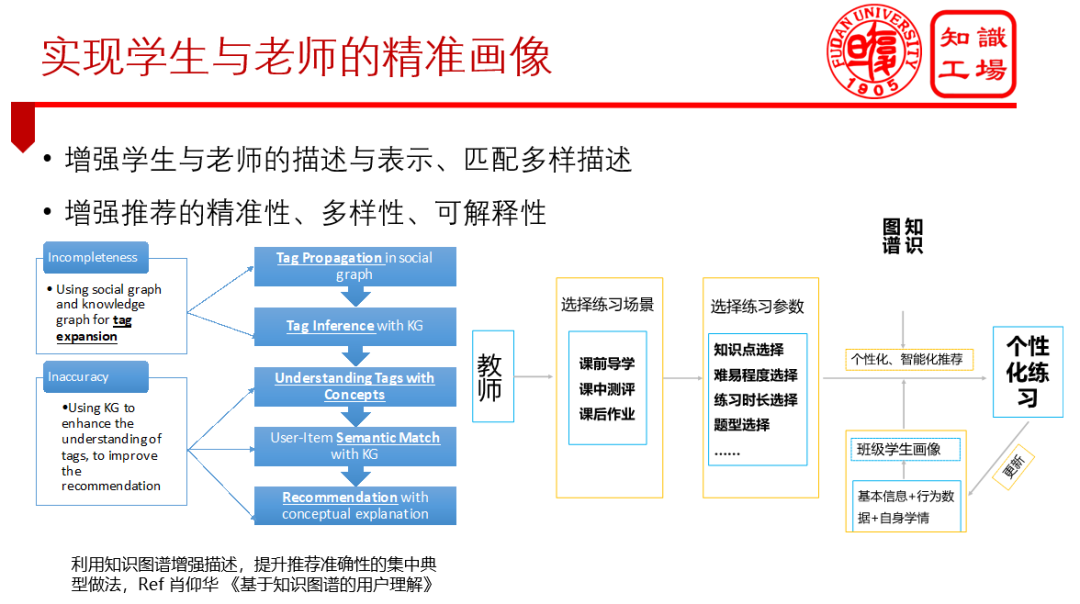 User profiling technology should be familiar to everyone; it essentially involves “tagging” to better characterize users and understand them. The accuracy of user profiling determines whether the understanding of users is accurate. In practical applications, there are mainly two issues to be solved in user profiling: first, the profile data is incomplete; second, the profile data is incorrect.These issues can be addressed using the knowledge graph. The nodes on the knowledge graph cover enough entities, and the concepts are abstract representations of knowledge in the education sector, which can serve as sources for user profile tags, with their high quality making the assigned tags more accurate. The relationships between tags, along with the rich semantic relationships contained in the graph, can help machines understand the meanings of these tags.A friendly structure facilitates better understanding and intuitive discovery of relationships between tags. Algorithms such as tag propagation and cross-domain recommendations can be used to mine more accurate tags to describe users, enriching user tags and improving user precision. Additionally, user profiles can be visualized as standalone products, generating personalized and dynamically changing user profile knowledge graphs based on the relationships in the graph.2. Accurate Learning Condition AnalysisKnowledge graphs enable more precise learning condition analysis. Traditional educational experts (teachers’ experiences) rely mainly on experience to assess learners’ knowledge and ability states, lacking the integration of educational measurement concepts, resulting in significant randomness and subjectivity.Based on knowledge graphs and big data analysis methods, the objective learning processes of learners can be mined from multiple dimensions, with numerous dimensions available for data mining, not limited to test scores, error notebooks, and learning records. These can reveal explicit features such as knowledge mastery and weak points, as well as delve into deeper aspects like learning speed, learning preferences, and cognitive levels, making the analysis results more personalized and objective. For unmet learning goals, analyzing the reasons using the knowledge graph can identify weak points and associated knowledge points, effectively filling gaps, and the diagnostic process is more adaptive and personalized.2. Smart ClassroomIn teaching applications, knowledge graphs can assist teachers in lesson preparation, educational research, question setting, and question analysis. The system can recommend related materials (lesson plans, course explanation plans, assignments, etc.) to enhance teachers’ teaching efficiency, and searches based on the graph can return required content more accurately.1. Intelligent Lesson PreparationUtilizing subject knowledge graphs to associate subject knowledge points with teaching content such as textbooks, lecture notes, and exercises, resources that meet teaching needs can be continuously pushed based on teachers’ teaching progress and textbook versions, coupled with searches to quickly and accurately obtain the resources teachers need, enhancing the efficiency and quality of lesson preparation. In addition to lesson preparation, subject knowledge graphs can also be used as background knowledge to assist in tasks such as intelligent test paper generation and exam analysis, greatly improving the efficiency of educational research.2. Smart ClassroomThrough precise analysis of learning conditions, the system recommends related consolidation exercises, formulates targeted teaching strategies, enhances teaching relevance, and achieves precise teaching.
User profiling technology should be familiar to everyone; it essentially involves “tagging” to better characterize users and understand them. The accuracy of user profiling determines whether the understanding of users is accurate. In practical applications, there are mainly two issues to be solved in user profiling: first, the profile data is incomplete; second, the profile data is incorrect.These issues can be addressed using the knowledge graph. The nodes on the knowledge graph cover enough entities, and the concepts are abstract representations of knowledge in the education sector, which can serve as sources for user profile tags, with their high quality making the assigned tags more accurate. The relationships between tags, along with the rich semantic relationships contained in the graph, can help machines understand the meanings of these tags.A friendly structure facilitates better understanding and intuitive discovery of relationships between tags. Algorithms such as tag propagation and cross-domain recommendations can be used to mine more accurate tags to describe users, enriching user tags and improving user precision. Additionally, user profiles can be visualized as standalone products, generating personalized and dynamically changing user profile knowledge graphs based on the relationships in the graph.2. Accurate Learning Condition AnalysisKnowledge graphs enable more precise learning condition analysis. Traditional educational experts (teachers’ experiences) rely mainly on experience to assess learners’ knowledge and ability states, lacking the integration of educational measurement concepts, resulting in significant randomness and subjectivity.Based on knowledge graphs and big data analysis methods, the objective learning processes of learners can be mined from multiple dimensions, with numerous dimensions available for data mining, not limited to test scores, error notebooks, and learning records. These can reveal explicit features such as knowledge mastery and weak points, as well as delve into deeper aspects like learning speed, learning preferences, and cognitive levels, making the analysis results more personalized and objective. For unmet learning goals, analyzing the reasons using the knowledge graph can identify weak points and associated knowledge points, effectively filling gaps, and the diagnostic process is more adaptive and personalized.2. Smart ClassroomIn teaching applications, knowledge graphs can assist teachers in lesson preparation, educational research, question setting, and question analysis. The system can recommend related materials (lesson plans, course explanation plans, assignments, etc.) to enhance teachers’ teaching efficiency, and searches based on the graph can return required content more accurately.1. Intelligent Lesson PreparationUtilizing subject knowledge graphs to associate subject knowledge points with teaching content such as textbooks, lecture notes, and exercises, resources that meet teaching needs can be continuously pushed based on teachers’ teaching progress and textbook versions, coupled with searches to quickly and accurately obtain the resources teachers need, enhancing the efficiency and quality of lesson preparation. In addition to lesson preparation, subject knowledge graphs can also be used as background knowledge to assist in tasks such as intelligent test paper generation and exam analysis, greatly improving the efficiency of educational research.2. Smart ClassroomThrough precise analysis of learning conditions, the system recommends related consolidation exercises, formulates targeted teaching strategies, enhances teaching relevance, and achieves precise teaching.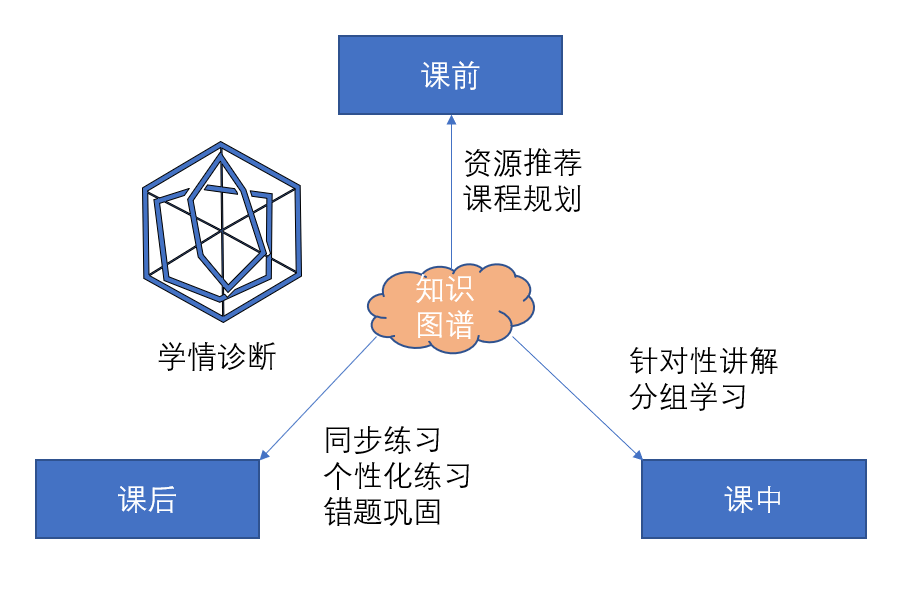 Comprehensive use of data mining and intelligent capabilities before, during, and after class. Before class, data mining techniques are used to obtain students’ learning condition data, formulate teaching strategies, and make decisions data-driven. During class, targeted teaching is conducted based on the established teaching strategies, explaining knowledge points and facilitating group discussions. The knowledge graph is used to visually present the inherent connections of knowledge, helping students build a deeper understanding of knowledge. After class, relevant exercises are recommended, and based on students’ learning condition and ability, customized recommendations for practice questions and error consolidation are provided, improving the quality and relevance of classroom teaching, integrating dynamic data analysis and learning condition diagnosis throughout the teaching process, and achieving personalized instruction, making teaching decisions data-driven and intelligent.3. Adaptive Learning1. Resource Push and Path PlanningBased on knowledge graphs, data analysis techniques can quickly detect and locate students’ learning conditions and weak points. With a more accurate judgment of students’ learning conditions, relevant content and learning strategies can be recommended reasonably and targeted, planning learning paths and completing a dynamic closed-loop of precise detection, content push, and path planning, steadily improving students’ knowledge mastery.Precise DetectionDetect learning levels and identify weak knowledge points. By automatically analyzing students’ dynamic learning data, learning levels can be detected, and students’ learning situations can be accurately diagnosed, along with analyzing weak knowledge points.
Comprehensive use of data mining and intelligent capabilities before, during, and after class. Before class, data mining techniques are used to obtain students’ learning condition data, formulate teaching strategies, and make decisions data-driven. During class, targeted teaching is conducted based on the established teaching strategies, explaining knowledge points and facilitating group discussions. The knowledge graph is used to visually present the inherent connections of knowledge, helping students build a deeper understanding of knowledge. After class, relevant exercises are recommended, and based on students’ learning condition and ability, customized recommendations for practice questions and error consolidation are provided, improving the quality and relevance of classroom teaching, integrating dynamic data analysis and learning condition diagnosis throughout the teaching process, and achieving personalized instruction, making teaching decisions data-driven and intelligent.3. Adaptive Learning1. Resource Push and Path PlanningBased on knowledge graphs, data analysis techniques can quickly detect and locate students’ learning conditions and weak points. With a more accurate judgment of students’ learning conditions, relevant content and learning strategies can be recommended reasonably and targeted, planning learning paths and completing a dynamic closed-loop of precise detection, content push, and path planning, steadily improving students’ knowledge mastery.Precise DetectionDetect learning levels and identify weak knowledge points. By automatically analyzing students’ dynamic learning data, learning levels can be detected, and students’ learning situations can be accurately diagnosed, along with analyzing weak knowledge points.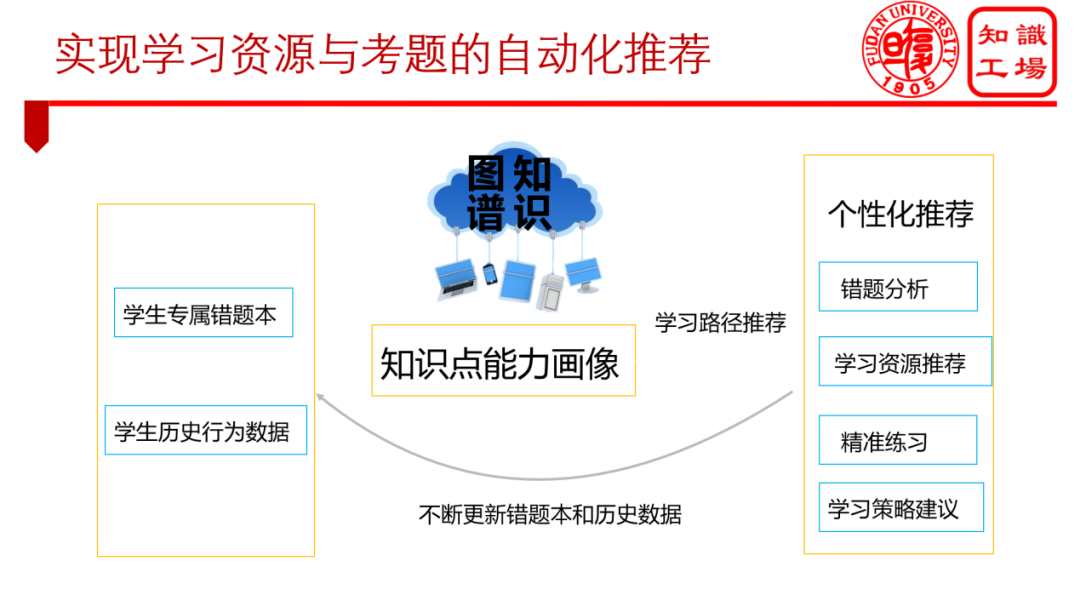 Content PushBased on recommendations from knowledge graphs, integrating various recommendation technologies such as content-based and collaborative filtering can make recommendations more precise. Provide students with more targeted content. Offer high-quality learning resources and personalized learning resources to achieve a comprehensive understanding of mistakes and help students escape the sea of questions, significantly reducing students’ repetitive practice time and academic burden. Recommendations based on knowledge graphs can also provide explanations of results from dimensions such as concepts, sequences, and attributes.Precise Learning Resource SearchBased on knowledge graphs, teaching resources can be tagged, understanding the knowledge points, associated exam points, and exam questions involved in learning resources. Deeply understanding the search content input by users can effectively achieve semantic search, accurately searching for the required resources. Additionally, knowledge graphs can display related sub-graphs when users search for related entities, allowing users to discover more knowledge related to that entity, aiding in knowledge association and divergent learning.Learning Path PlanningPath planning services refer to customizing personalized learning plans for students based on the relationships between knowledge points and multiple dimensions such as learning preferences and abilities, allowing students to gradually deepen their learning from surface-level knowledge to deeper learning.4. Deep Reading
Content PushBased on recommendations from knowledge graphs, integrating various recommendation technologies such as content-based and collaborative filtering can make recommendations more precise. Provide students with more targeted content. Offer high-quality learning resources and personalized learning resources to achieve a comprehensive understanding of mistakes and help students escape the sea of questions, significantly reducing students’ repetitive practice time and academic burden. Recommendations based on knowledge graphs can also provide explanations of results from dimensions such as concepts, sequences, and attributes.Precise Learning Resource SearchBased on knowledge graphs, teaching resources can be tagged, understanding the knowledge points, associated exam points, and exam questions involved in learning resources. Deeply understanding the search content input by users can effectively achieve semantic search, accurately searching for the required resources. Additionally, knowledge graphs can display related sub-graphs when users search for related entities, allowing users to discover more knowledge related to that entity, aiding in knowledge association and divergent learning.Learning Path PlanningPath planning services refer to customizing personalized learning plans for students based on the relationships between knowledge points and multiple dimensions such as learning preferences and abilities, allowing students to gradually deepen their learning from surface-level knowledge to deeper learning.4. Deep Reading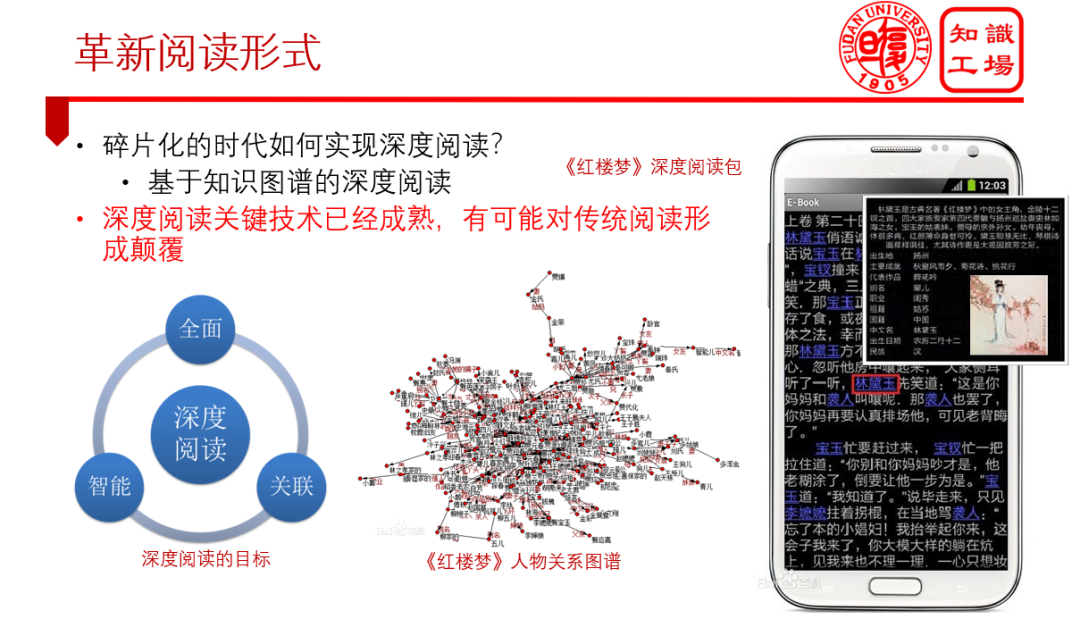 Deep reading based on knowledge graphs mainly aims to achieve intelligent connections between knowledge, allowing for a comprehensive understanding of knowledge. Utilizing entity linking technology for entity recognition and connection in electronic publications, knowledge information can be displayed in the form of knowledge cards. It can also link to other related knowledge, recommending relevant knowledge to help users connect knowledge, greatly enhancing users’ comprehensive understanding of knowledge. Deep reading can be applied not only in the education sector but also in knowledge management and publishing industries.5. Q&A RobotsEducational robots have become an important application in the education field. Relying on Q&A systems as the core, educational robots can perform a series of teaching tasks such as course Q&A, knowledge retrieval recommendations, and teaching management. This not only alleviates teachers’ burdens and pressures but also addresses students’ actual problems. An excellent and comprehensive teaching robot can integrate multiple system modules such as task-based Q&A, chatbots, and knowledge-based Q&A, while also possessing multi-turn Q&A capabilities. Knowledge graphs play an important role in understanding query questions and guiding knowledge generation, being central to Knowledge-Based Question Answering (KBQA).
Deep reading based on knowledge graphs mainly aims to achieve intelligent connections between knowledge, allowing for a comprehensive understanding of knowledge. Utilizing entity linking technology for entity recognition and connection in electronic publications, knowledge information can be displayed in the form of knowledge cards. It can also link to other related knowledge, recommending relevant knowledge to help users connect knowledge, greatly enhancing users’ comprehensive understanding of knowledge. Deep reading can be applied not only in the education sector but also in knowledge management and publishing industries.5. Q&A RobotsEducational robots have become an important application in the education field. Relying on Q&A systems as the core, educational robots can perform a series of teaching tasks such as course Q&A, knowledge retrieval recommendations, and teaching management. This not only alleviates teachers’ burdens and pressures but also addresses students’ actual problems. An excellent and comprehensive teaching robot can integrate multiple system modules such as task-based Q&A, chatbots, and knowledge-based Q&A, while also possessing multi-turn Q&A capabilities. Knowledge graphs play an important role in understanding query questions and guiding knowledge generation, being central to Knowledge-Based Question Answering (KBQA).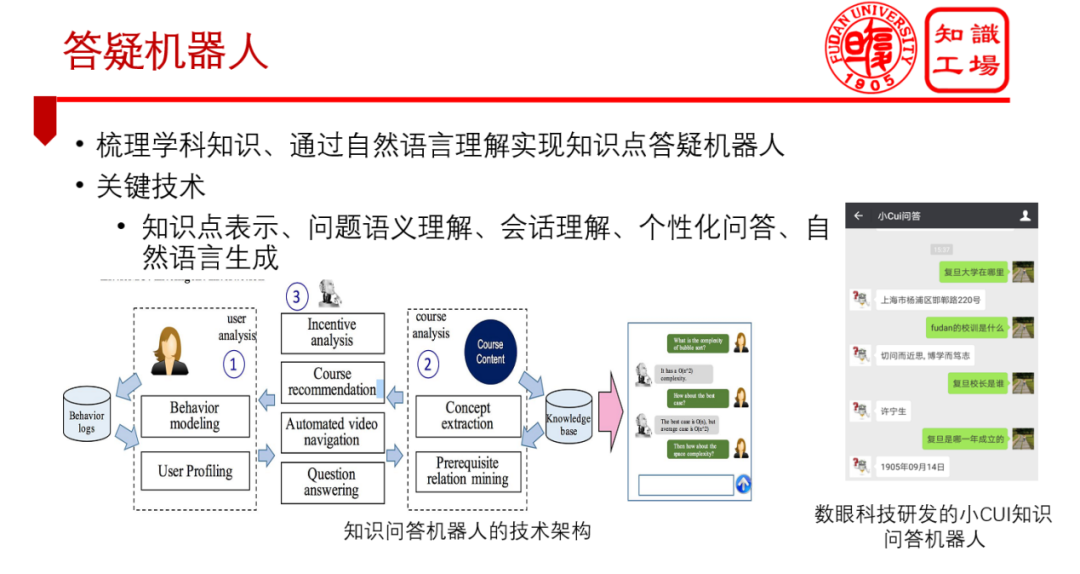 6. Subject Knowledge Services
6. Subject Knowledge Services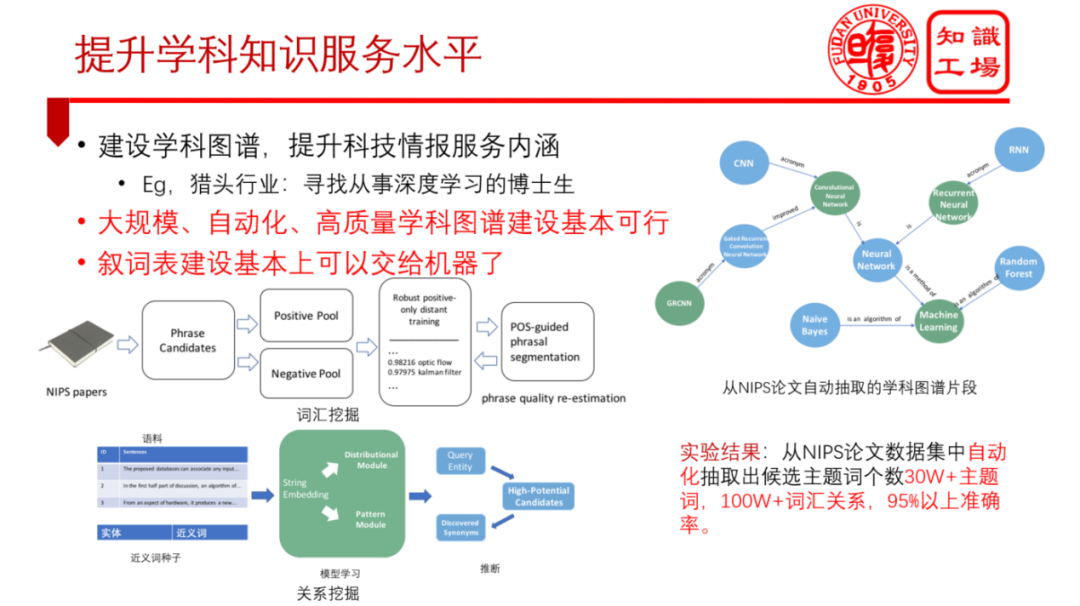 The purpose of education is to provide useful talents for social development and construction. The educational knowledge graph can also serve downstream applications in education such as talent selection and recruitment. For instance, the job market can leverage educational knowledge graphs to empower intelligent recruitment. Utilizing subject knowledge graphs in scenarios such as job matching and intelligent job recommendations can enhance the efficiency and accuracy of corporate recruitment, while also effectively improving recruiters’ work efficiency and satisfaction.Note: This article is based on the practical project experience of the author Tinghao Shi in conjunction with Professor Xiaoyang Hua’s report on “Cognitive Intelligence and Educational Intelligence”.“100 Innovators in Higher Education Teaching” is a knowledge-based media aimed at college teachers and teacher training students, focusing on teaching innovation, curriculum innovation, lifelong learning, blended learning, virtual educational research rooms, etc. We are committed to “allowing some teachers and students to touch the future of education first”!
The purpose of education is to provide useful talents for social development and construction. The educational knowledge graph can also serve downstream applications in education such as talent selection and recruitment. For instance, the job market can leverage educational knowledge graphs to empower intelligent recruitment. Utilizing subject knowledge graphs in scenarios such as job matching and intelligent job recommendations can enhance the efficiency and accuracy of corporate recruitment, while also effectively improving recruiters’ work efficiency and satisfaction.Note: This article is based on the practical project experience of the author Tinghao Shi in conjunction with Professor Xiaoyang Hua’s report on “Cognitive Intelligence and Educational Intelligence”.“100 Innovators in Higher Education Teaching” is a knowledge-based media aimed at college teachers and teacher training students, focusing on teaching innovation, curriculum innovation, lifelong learning, blended learning, virtual educational research rooms, etc. We are committed to “allowing some teachers and students to touch the future of education first”!
Note: “Position + Name”, join the reader communication group.
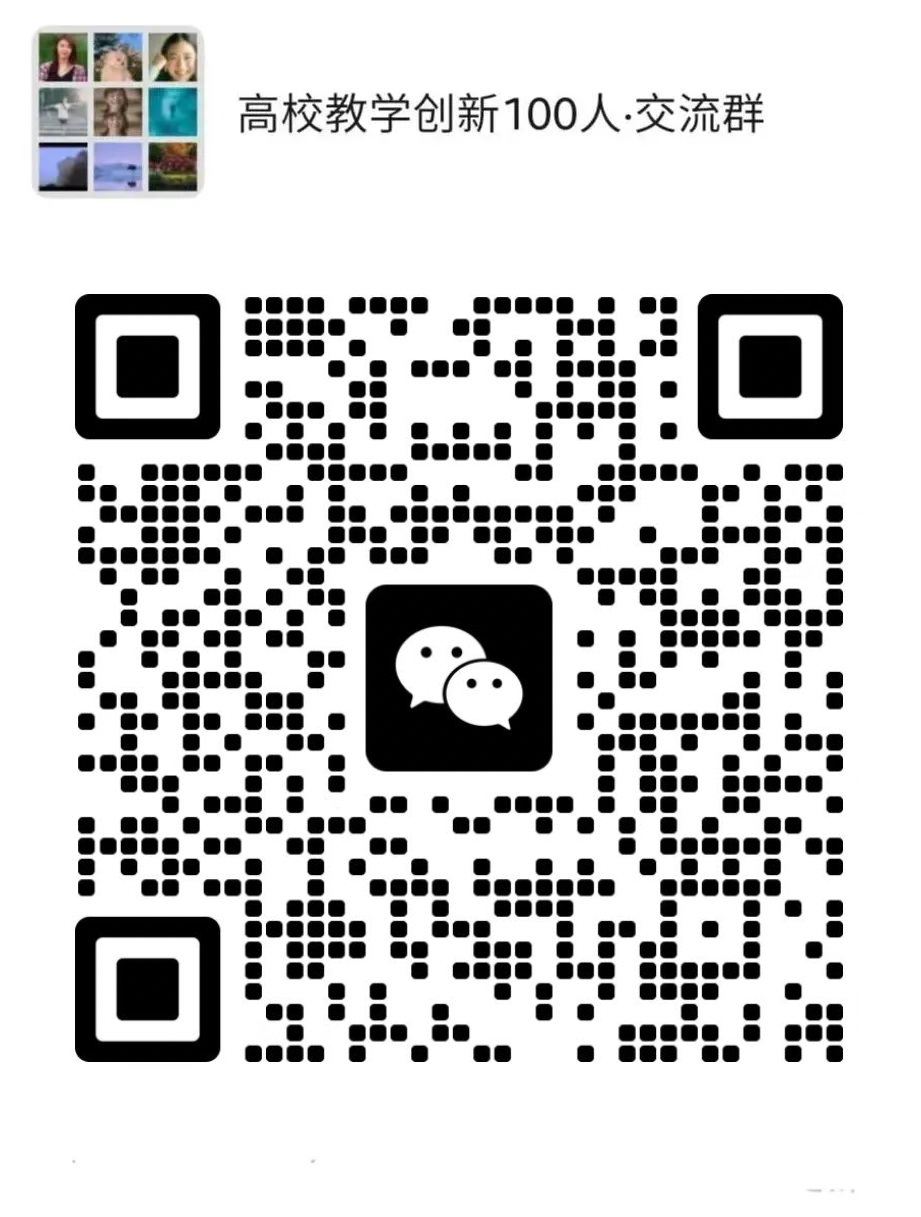
Contact us:
Wang Hui, Lead Writer & Content Teacher, WeChat ID:HofMarchbh

Deputy Director Fan Hailin of the Higher Education Department: Why build a virtual educational research room, what to build, and how to build it?
“2023 Key Points for Virtual Educational Research Room Construction”
Expert Group of the Ministry of Education on Virtual Educational Research Room Construction publishes the third issue of “Smart Educational Research in Higher Education”.
Professor Liu Yunshan of Peking University: Why have outstanding students not moved towards “competition excellence,” but rather towards “competition mediocrity”?
Ten characteristics and indicators of a quality classroom.
Feng Xiaoying et al. from Beijing Normal University: Four typical strategies for blended learning design.
